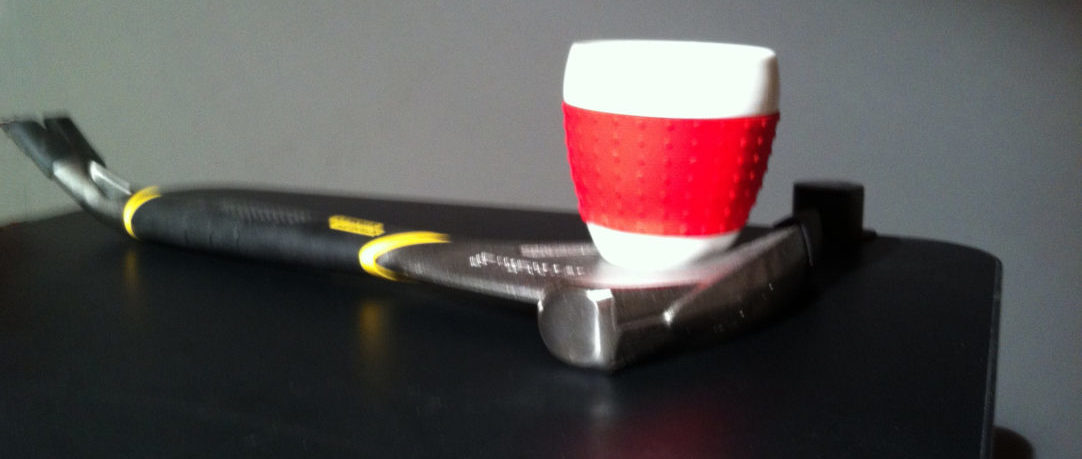Applying OOO
I’ve now spent a couple months reading and thinking about OOO. At this point the question becomes: if object-oriented ontology is interesting and useful, how do you use it (productively) for analysis?
The terms used in OOO make me think a lot about surfaces, even though that doesn’t seem to be the area that most people are exploring. Most explorations with which I’m familiar focus on computer oriented topics, which is okay as far as it goes, but it would be interesting to explore situations less designed by man.
Some potential topics include:
- Analyzing bacterial flagellar movement as it is affected by the environment. Certainly we’ve been modeling that movement for decades and likely have reasonable fine-grained understanding of its operation, just to pick one example: Swimming in Circles: Motion of Bacteria near Solid Boundaries
- Corrosion modeling: it’s certainly a surface phenomenon and has been extensively studied at a fine-grained level because of the enormous economic opportunities available in corrosion prevention. For practical reasons, I’m reluctant to go down this path — the “economic opportunities available” has had the effect of making the software prohibitively expensive for individual use,
- Examine the point at which an object becomes “noticed” by another object. Think for example of when moss starts growing on a rock:
- The rock has to persist for a certain amount of time.
- The rock has to be relatively stable physically (cannot be moving in supersonic speeds in the atmosphere).
- Probably rock cannot be vibrating too much.
- Certainly the rock cannot be too hot or too cold.
However, even if you pursued one of these paths, what do you gain? What do you gain from using OOO as opposed to using existing engineering, biological, or surface science techniques? Is there a value add?
Many of these issues could be explored using a combination of Finite Element Methods (FEM) and experiment. However, FEM are very bottom up, to get them to work well requires diving down to a very low level of interaction. OOO “leveling” won’t keep you at the appropriate level since FEM don’t work unless you dive fairly deep.
Doing this requires revisiting relationships and how they impact leveling and our analysis of interactions. I thought it most appropriate to split that discussion off into a separate post here.
But how does that affect the rock and the moss? Well, here’s some moss growth criteria from here
Key points
- The exception would be soils with a high sand content preventing a stable surface; ever-shifting loose sandy soils make attachment difficult, but not impossible.
- The more important aspect to encouraging mosses to establish is texture and particle size. If you imagine yourself to be less than an inch tall and had to move across the soils surface, you would understand the importance of smoothness.
- Grade and contour the area if needed, remember that moss will follow the small undulations that are normally not noticeable until a smooth carpet of green is hugging the ground.
- Watch also for small depressions that will end up collecting debris and water. This includes depressions up to three feet in diameter.
- Be aware of any water run-off paths that you may create or that already exist. Mosses are great soil stabilizers and will filter water run off, but first they need to be established to withstand flowing water.
- Keep in mind that mosses will first need some rhizome attachment at their growing edge before they will send out new branching. Mosses do not like being unattached nor do they like being exposed to air without some surface below them.
- With regards to soil pH, moss will grow in most pH conditions. Adjusting the pH is usually not needed.
- They are limited to energy production by three factors: moisture, sunlight, and temperatures above 20 degrees Fahrenheit.
- Mosses are evergreen plants. They will grow year round as long as moisture and sunlight are available at the same time. Photosynthesis is possible even below 32 degrees Fahrenheit. Mosses do not have a seasonal growth habit, instead their dormancy comes anytime they are dry. They return to active growth as soon as moisture fills their tissue.
This is a fairly detailed list, certainly much more detailed than I could have developed on my own. However, the question remains, is this worth testing?
For me the answer is no. Such a testing of the nested set of relationships that constitute any phenomenon is too similar to conventional scientific and engineering practice. The only difference in the OOO case is that goodness metric is not the correlationist goodness, but rather goodness consists of that which maintains the object in its functional relationship. If the object ceases to be in this relationship we need to examine why.
I find that the only difference between OOO and standard practice. Perhaps not standard practice in philosophy, but standard practice in Science & Engineering — very similar to understanding why a building fell down, or why a bridge corroded.
I’ll admit that there is the potential that I’ve missed something totally obvious. However, given my current understanding, although I find OOO interesting, and probably useful, it doesn’t fit my interests/skillset. I will be curious to see how the field develops and eagerly look forward to new work in the area.
Update 30 July 2013: IEEE Spectrum recently ran a large multipage ad for Comsol Multiphysics. Comsol seems to be one of the best places to start if you want to understand what the object in itself is experiencing.

Leave a Reply